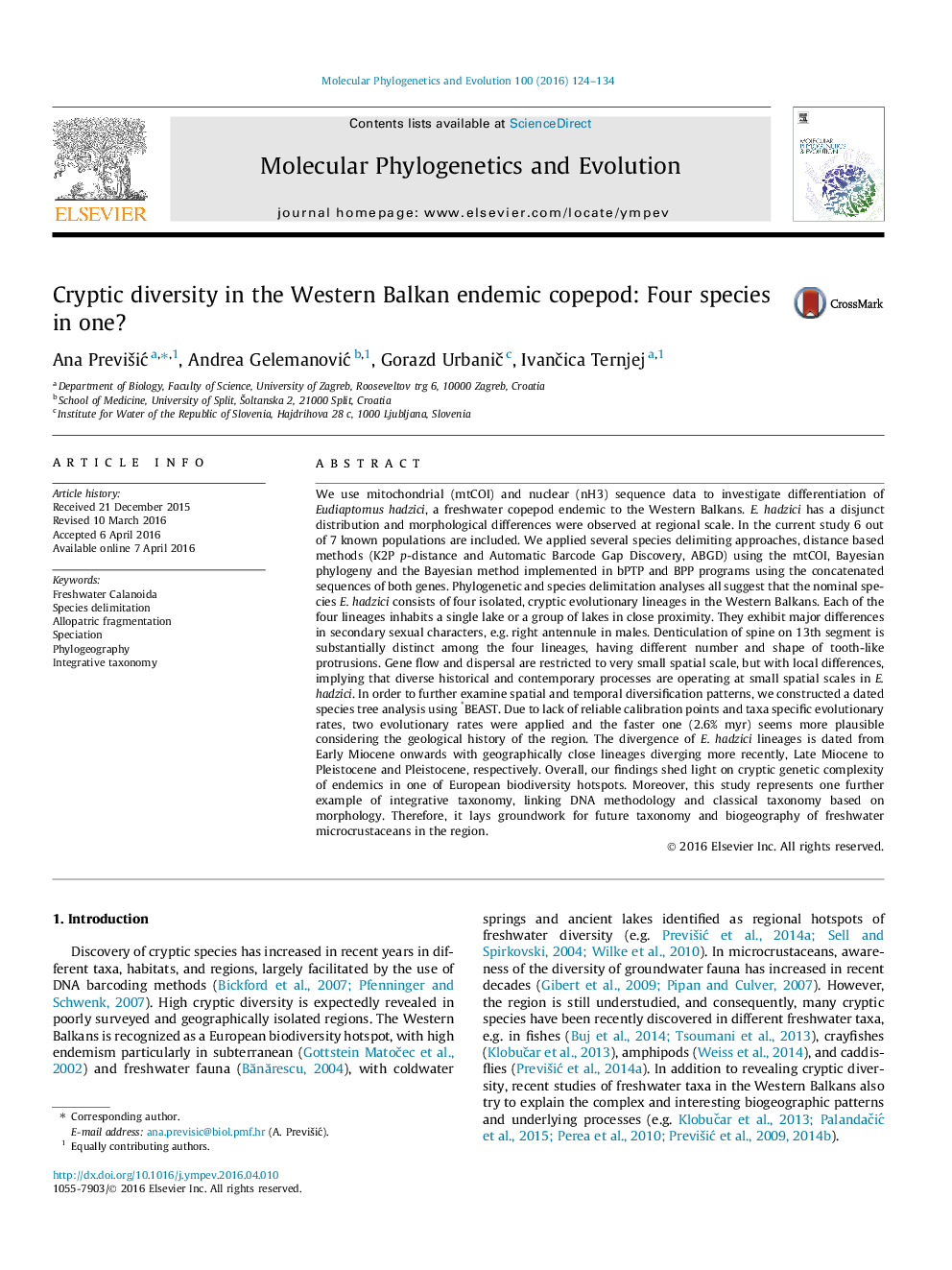| کد مقاله | کد نشریه | سال انتشار | مقاله انگلیسی | نسخه تمام متن |
|---|---|---|---|---|
| 2833657 | 1570797 | 2016 | 11 صفحه PDF | دانلود رایگان |
• We investigate differentiation of Eudiaptomus hadzici endemic to Western Balkan lakes.
• We use distance and Bayesian methods to delimit four cryptic, allopatric lineages.
• We calculate phylogeny and present morphological differences between lineages.
• Cryptic lineages have very narrow ranges indicating spatially restricted dispersal.
• Lineages differentiated from Early Miocene onwards, the closest ones in Pleistocene.
We use mitochondrial (mtCOI) and nuclear (nH3) sequence data to investigate differentiation of Eudiaptomus hadzici, a freshwater copepod endemic to the Western Balkans. E. hadzici has a disjunct distribution and morphological differences were observed at regional scale. In the current study 6 out of 7 known populations are included. We applied several species delimiting approaches, distance based methods (K2P p-distance and Automatic Barcode Gap Discovery, ABGD) using the mtCOI, Bayesian phylogeny and the Bayesian method implemented in bPTP and BPP programs using the concatenated sequences of both genes. Phylogenetic and species delimitation analyses all suggest that the nominal species E. hadzici consists of four isolated, cryptic evolutionary lineages in the Western Balkans. Each of the four lineages inhabits a single lake or a group of lakes in close proximity. They exhibit major differences in secondary sexual characters, e.g. right antennule in males. Denticulation of spine on 13th segment is substantially distinct among the four lineages, having different number and shape of tooth-like protrusions. Gene flow and dispersal are restricted to very small spatial scale, but with local differences, implying that diverse historical and contemporary processes are operating at small spatial scales in E. hadzici. In order to further examine spatial and temporal diversification patterns, we constructed a dated species tree analysis using *BEAST. Due to lack of reliable calibration points and taxa specific evolutionary rates, two evolutionary rates were applied and the faster one (2.6% myr) seems more plausible considering the geological history of the region. The divergence of E. hadzici lineages is dated from Early Miocene onwards with geographically close lineages diverging more recently, Late Miocene to Pleistocene and Pleistocene, respectively. Overall, our findings shed light on cryptic genetic complexity of endemics in one of European biodiversity hotspots. Moreover, this study represents one further example of integrative taxonomy, linking DNA methodology and classical taxonomy based on morphology. Therefore, it lays groundwork for future taxonomy and biogeography of freshwater microcrustaceans in the region.
Figure optionsDownload as PowerPoint slide
Journal: Molecular Phylogenetics and Evolution - Volume 100, July 2016, Pages 124–134
